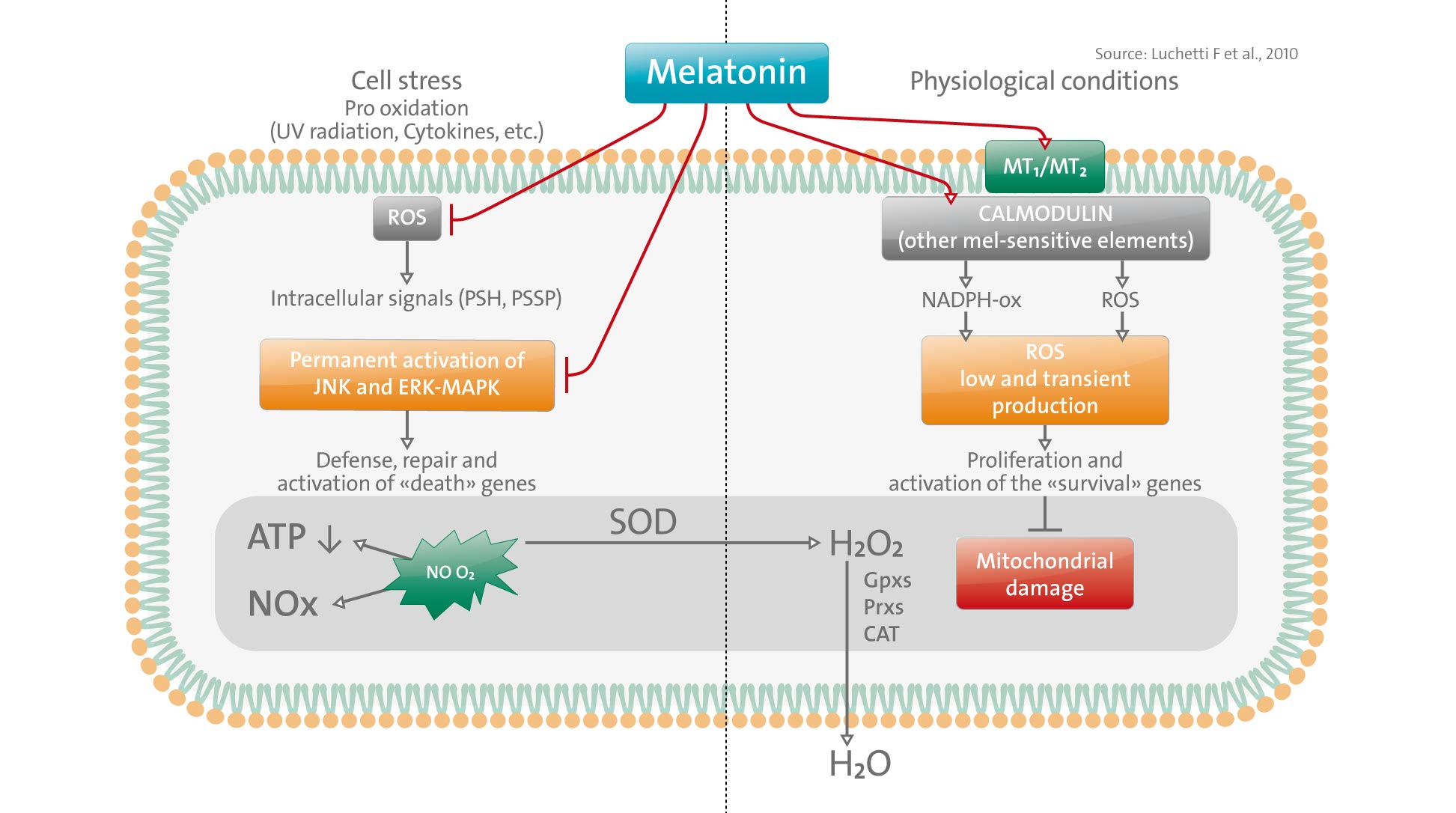Besides its well-known regulatory role on circadian rhythm, the pineal gland hormone melatonin has other biological functions and a distinct metabolism in various cell types and peripheral tissues. In different tissues and organs, melatonin has been described to act as a paracrine and also as an intracrine and autocrine agent with overall homeostatic functions and pleiotropic effects that include cell protection and prosurvival factor.
These latter effects, documented in a number of in vitro and in vivo studies, are sustained through both receptor-dependent and -independent mechanisms that control detoxification and stress response genes, thus conferring protection against a number of xenobiotics and endobiotics produced by acute and chronic noxious stimuli. Redox-sensitive components are included in the cell protection signaling of melatonin and in the resulting transcriptional response that involves the control of NF-κB, AP-1, and Nrf2.
By these pathways, melatonin stimulates the expression of antioxidant and detoxification genes, acting in turn as a glutathione system enhancer. A further and converging mechanism of cell protection by this indoleamine described in different models seems to lie in the control of damage and signaling function of mitochondria that involves decreased production of reactive oxygen species and activation of the antiapoptotic and redox-sensitive element Bcl2.
Recent evidence suggests that upstream components in this mitochondrial route include the calmodulin pathway with its central role in melatonin signaling and the survival-promoting component of MAPKs, ERK1/2. In this review article, we will discuss these and other molecular aspects of melatonin signaling relevant to cell protection and survival mechanisms.
